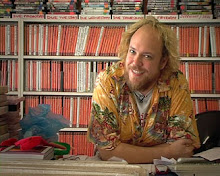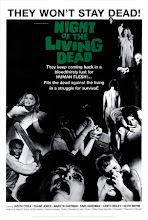 The Horrible Dr Hitchcock
The Horrible Dr Hitchcock Italy 1962 colour
Italy 1962 colouraka The Horrible Secret of Dr. Hichcock, The Secret of Dr. Hichcock, The Terrible Secret of Dr. Hichcock, The Terror of Dr. Hichcock, L’Orribile Segreto del Dr. Hichcock
Director “Robert Hampton”/Riccardo Freda Writer “Julyan Perry”/Ernesto Gastaldi
Cast Barbara Steele (Cynthia Hichcock), Robert Flemyng (Professor Bernard Hichcock), “Montgomery Glenn”/Silvano Tranquilli (Dr. Kurt Lowe), “Teresa Fitzgerald”/Maria Teresa Vianello (Margherita Hichcock), Harriet “White”/Medin (Martha the maid)
 Good evening, and welcome to an Schlock Treatment All Italia special with two films from horror specialist Riccardo Freda.
Good evening, and welcome to an Schlock Treatment All Italia special with two films from horror specialist Riccardo Freda.We’ve often remarked here on Schlock Treatment just how far ahead the Europeans were in the Sixties in their portrayal of on-screen sex and violence. There’s usually a perverse undercurrent that’s also lacking in horror films from America and Britain at the time, and The Horrible Dr Hichcock from 1962, a necrophilic reimagining of The Premature Burial with all of Poe’s morbid sexuality intact, is the perfect case in point.
 English actor Robert Flemyng plays the title role with gusto as the Victorian professor with a penchant for women who are… well, let’s just say they he doesn’t like them to move a lot. His first wife Margherita passes away as a result of one of his sexual experiments gone horribly wrong. Years later the Professor’s new bride Cynthia (a rare sympathetic role for British scream queen Barbara Steele) arrives at Hichcock’s mansion to find nothing has been touched since Margherita’s death, including her coffin in the family crypt jealously guarded by her black cat Jezebel, and Cynthia starts feeling the first wife’s presence everywhere. To make matters worse, her husband has turned emotionally and physically cold, spends a lot of time in the hospital morgue, and her milk is starting to taste a little strange…
English actor Robert Flemyng plays the title role with gusto as the Victorian professor with a penchant for women who are… well, let’s just say they he doesn’t like them to move a lot. His first wife Margherita passes away as a result of one of his sexual experiments gone horribly wrong. Years later the Professor’s new bride Cynthia (a rare sympathetic role for British scream queen Barbara Steele) arrives at Hichcock’s mansion to find nothing has been touched since Margherita’s death, including her coffin in the family crypt jealously guarded by her black cat Jezebel, and Cynthia starts feeling the first wife’s presence everywhere. To make matters worse, her husband has turned emotionally and physically cold, spends a lot of time in the hospital morgue, and her milk is starting to taste a little strange… Hichcock’s director Riccardo Freda was a true craftsman held in the same regard as other horror specialists Mario Bava and Dario Argento, if not as well known. His horror films even predate Bava’s; the 1956 I Vampiri, released overseas as The Devil’s Commandment, started the Italian gothic cycle, and although working in every conceivable genre, Freda would return to horror with perhaps his signature works, this and its follow-up The Ghost from 1963, also starring Barbara Steele. In Bava’s Black Sunday and Freda’s The Horrible Dr Hichcock, Steele was never better, and as the tortured bride Cynthia her iconic features dominate the screen, looming out of shadowy passages and gothic sets drenched in red lighting as her stunning eyes convey her unravelling sanity. Add Freda’s meticulous framing and attention to detail, and we have one of the true masterpieces of Italian horror, the 1962 The Horrible Dr Hichcock.
Hichcock’s director Riccardo Freda was a true craftsman held in the same regard as other horror specialists Mario Bava and Dario Argento, if not as well known. His horror films even predate Bava’s; the 1956 I Vampiri, released overseas as The Devil’s Commandment, started the Italian gothic cycle, and although working in every conceivable genre, Freda would return to horror with perhaps his signature works, this and its follow-up The Ghost from 1963, also starring Barbara Steele. In Bava’s Black Sunday and Freda’s The Horrible Dr Hichcock, Steele was never better, and as the tortured bride Cynthia her iconic features dominate the screen, looming out of shadowy passages and gothic sets drenched in red lighting as her stunning eyes convey her unravelling sanity. Add Freda’s meticulous framing and attention to detail, and we have one of the true masterpieces of Italian horror, the 1962 The Horrible Dr Hichcock. The Witch’s Curse
The Witch’s CurseItaly 1962 colour
aka Maciste In Hell, Maciste All’Inferno
Director “Robert Hampton”/Riccardo Freda Writers Oreste Biancoli, Ennio De Concini, Eddy H. Given, Piero Pierotti
Cast “Kirk Morris”/Adriano Bellini (Maciste), Hélène Chanel (Fania), Vira Silenti (Young Martha Gaunt), Andrea Bosic (Judge Parrish)
 Our second film tonight is one of those bizarre hybrids we like to screen on Schlock Treatment. A few weeks ago we screened Hercules In The Haunted World, a Mario Bava film in which Hercules descends into the nightmarish world of the undead. Just to prove Herculean horrors are not a one-shot genre, we have Riccardo Freda’s reply, in which Hercules goes to hell – via Scotland – in the 1962 The Witch’s Curse.
Our second film tonight is one of those bizarre hybrids we like to screen on Schlock Treatment. A few weeks ago we screened Hercules In The Haunted World, a Mario Bava film in which Hercules descends into the nightmarish world of the undead. Just to prove Herculean horrors are not a one-shot genre, we have Riccardo Freda’s reply, in which Hercules goes to hell – via Scotland – in the 1962 The Witch’s Curse. The film starts in 1550 in the tiny Scottish village of Loch Laird, at the burning of the local witch Martha Gaunt, once courted by judge Parrish in her youth but now condemned to the stake. A hundred years later Martha’s final uttered curse appears to be driving the town’s young women to hang themselves at a certain tree, forcing the local burgomeister to declare them witches and burn them anyway. When the great-great granddaughter with the unfortunate name of Martha Gaunt is thrown in a dungeon awaiting execution (just in case, you understand), Hercules - or, as he’s dubbed, his original Italian title Machiste - makes an appearance in his loin cloth and sandals, looking like he’s not only a long way but a long TIME from home, with no-one seeming to give a rancid haggis either way. Machiste proves he’s more than walnuts in a sausage suit by setting out to lift the witch’s curse, ripping up the hanging tree and descending into Hell through the hole underneath, where he battles an ogre, a stampede of cattle, and the temptations of a young blonde witchy woman who may very well be the Cursing One herself.
The film starts in 1550 in the tiny Scottish village of Loch Laird, at the burning of the local witch Martha Gaunt, once courted by judge Parrish in her youth but now condemned to the stake. A hundred years later Martha’s final uttered curse appears to be driving the town’s young women to hang themselves at a certain tree, forcing the local burgomeister to declare them witches and burn them anyway. When the great-great granddaughter with the unfortunate name of Martha Gaunt is thrown in a dungeon awaiting execution (just in case, you understand), Hercules - or, as he’s dubbed, his original Italian title Machiste - makes an appearance in his loin cloth and sandals, looking like he’s not only a long way but a long TIME from home, with no-one seeming to give a rancid haggis either way. Machiste proves he’s more than walnuts in a sausage suit by setting out to lift the witch’s curse, ripping up the hanging tree and descending into Hell through the hole underneath, where he battles an ogre, a stampede of cattle, and the temptations of a young blonde witchy woman who may very well be the Cursing One herself. It’s an absurd combination of genres with some of the worst Scottish accents committed to film (including that one!), which at times gives you Monty Python And The Holy Grail flashbacks: “She’s a witch! May we burn her?” Like Hercules In The Haunted World, The Witch’s Curse is Hell on a shoestring, and even that’s starting to smoulder, but ever the artist-as-filmmaker, Freda tries to give more than a smoke-and-cardboard spookshow and if you look past the ludicrous stuffed lion, for the most part he succeeds. In fact the weakest link in the film is Maciste himself, Kirk Morris (real name Adriano Bellini), a blonde Elvis lookalike and former gondolier from Venice whose presence in over a dozen Hercules or Sons of Hercules features is the closest thing resembling cardboard, and whose wretched look of strain and pain when picking up boulders is the same one he has delivering his dialogue. A Herculean effort, but it’s back up the canal for you my son.
It’s an absurd combination of genres with some of the worst Scottish accents committed to film (including that one!), which at times gives you Monty Python And The Holy Grail flashbacks: “She’s a witch! May we burn her?” Like Hercules In The Haunted World, The Witch’s Curse is Hell on a shoestring, and even that’s starting to smoulder, but ever the artist-as-filmmaker, Freda tries to give more than a smoke-and-cardboard spookshow and if you look past the ludicrous stuffed lion, for the most part he succeeds. In fact the weakest link in the film is Maciste himself, Kirk Morris (real name Adriano Bellini), a blonde Elvis lookalike and former gondolier from Venice whose presence in over a dozen Hercules or Sons of Hercules features is the closest thing resembling cardboard, and whose wretched look of strain and pain when picking up boulders is the same one he has delivering his dialogue. A Herculean effort, but it’s back up the canal for you my son.Hardly a classic, but a weirdly memorable peplum and Black Sunday knockoff nonetheless, Schlock Treatment once again descends into the bowels of hell with the 1962 The Witch’s Curse.





















































































No comments:
Post a Comment